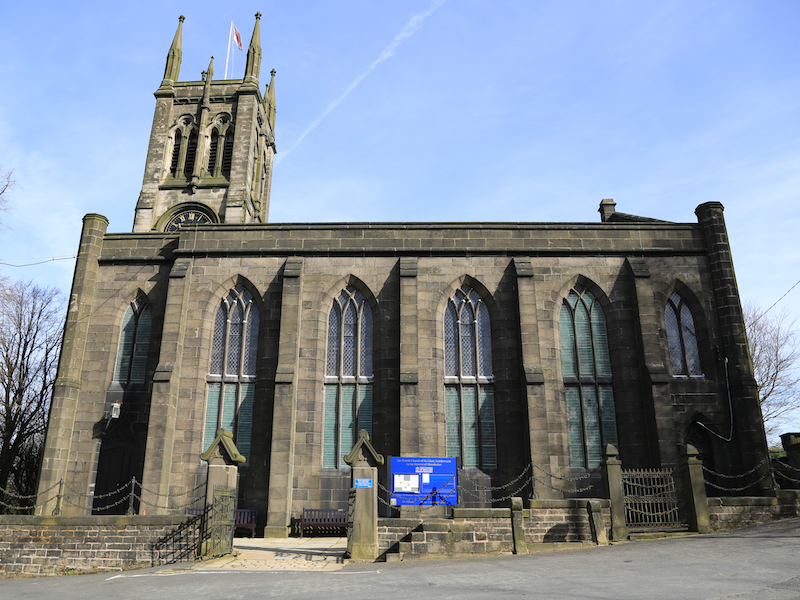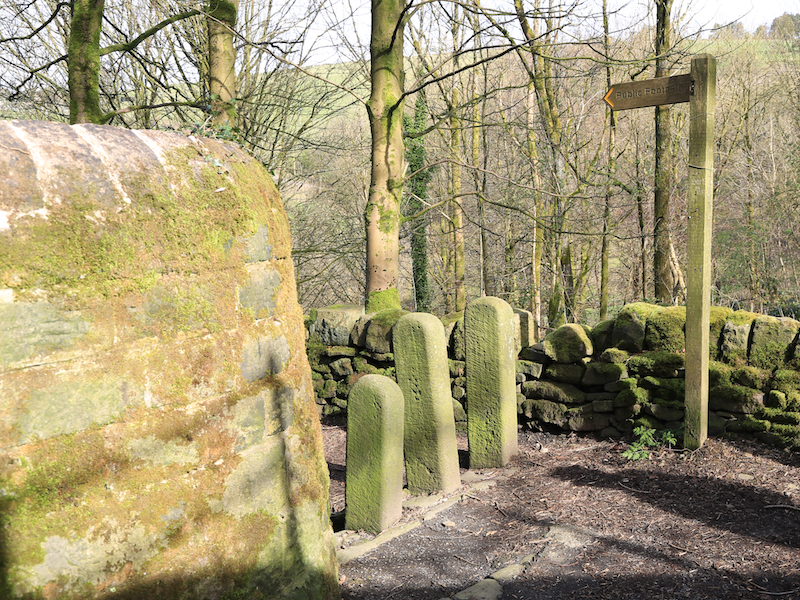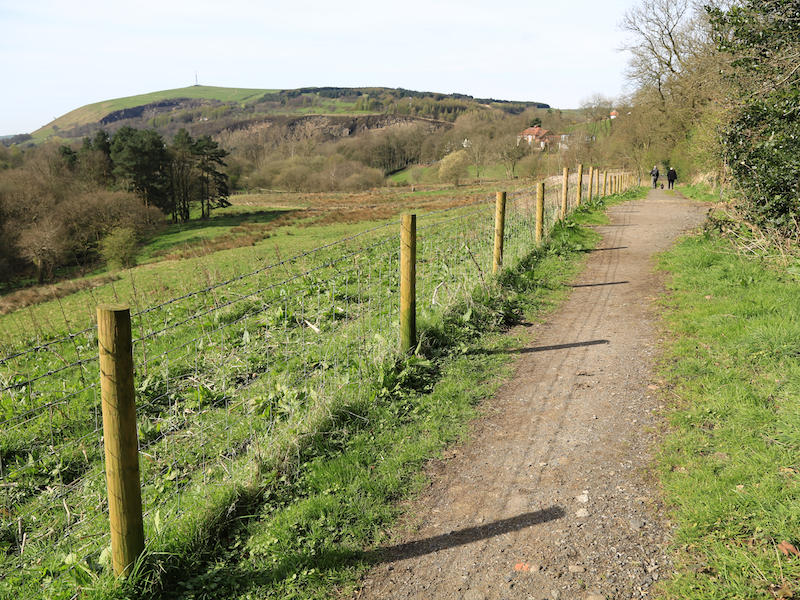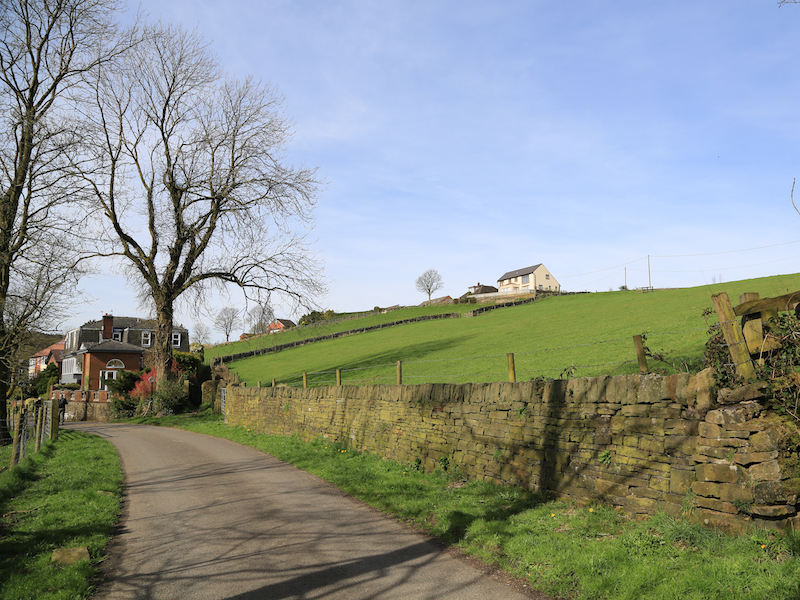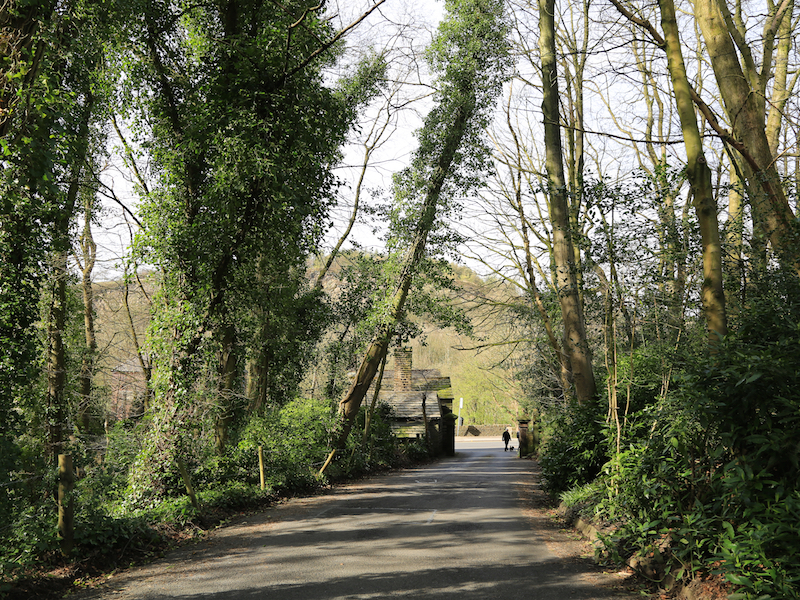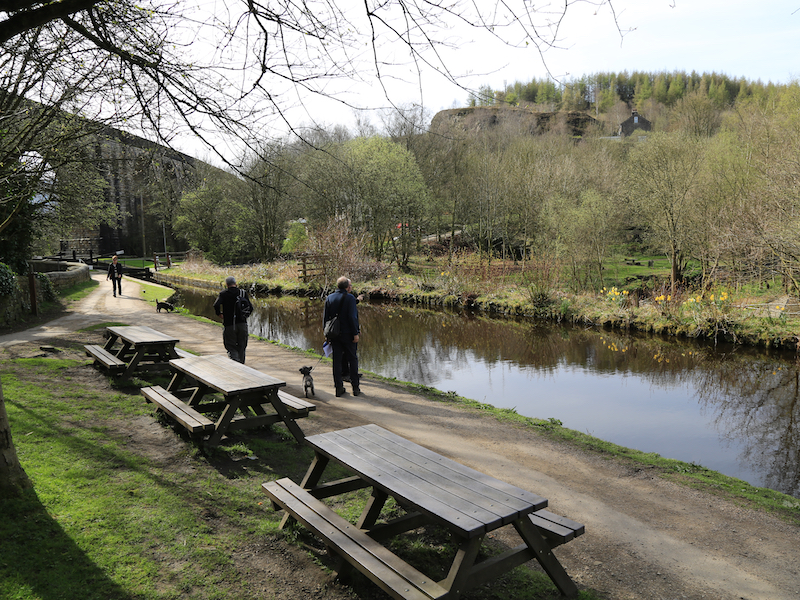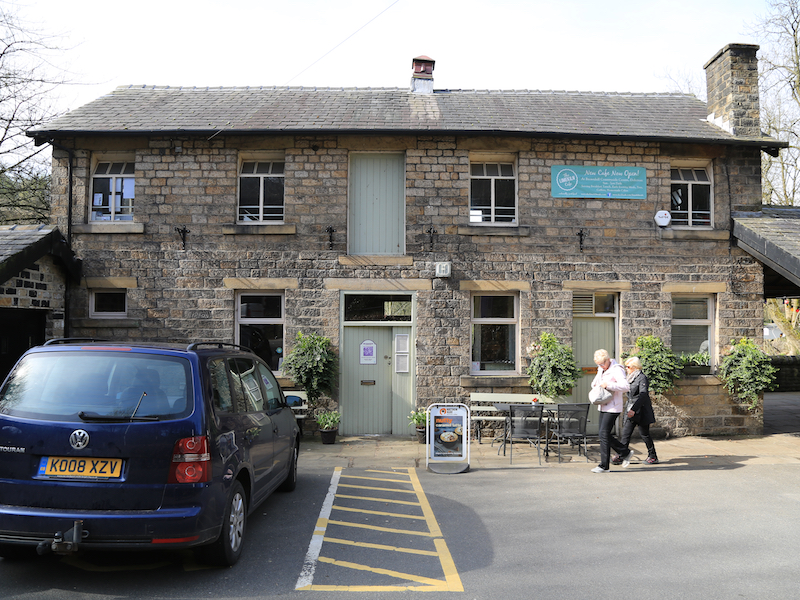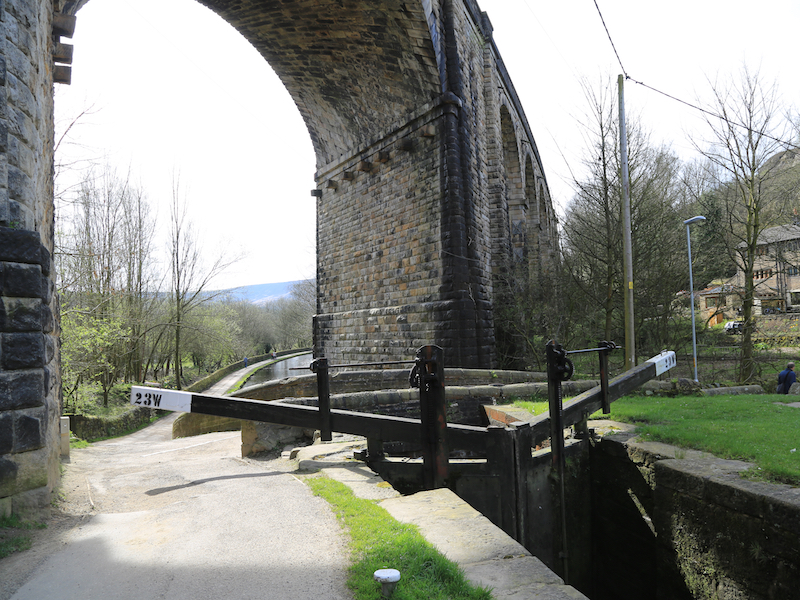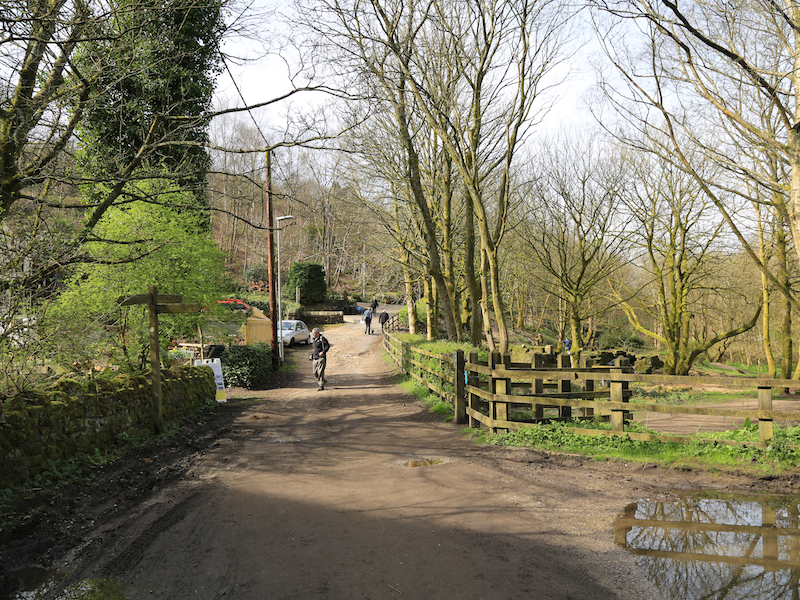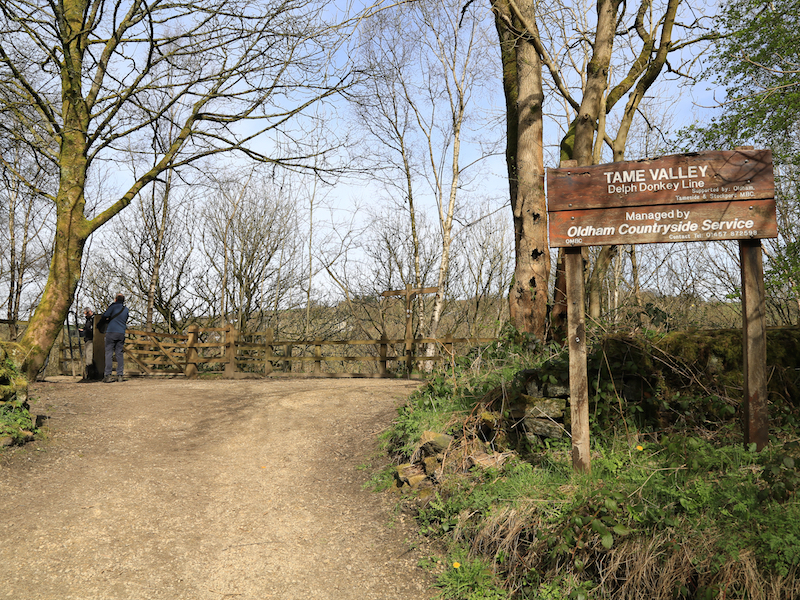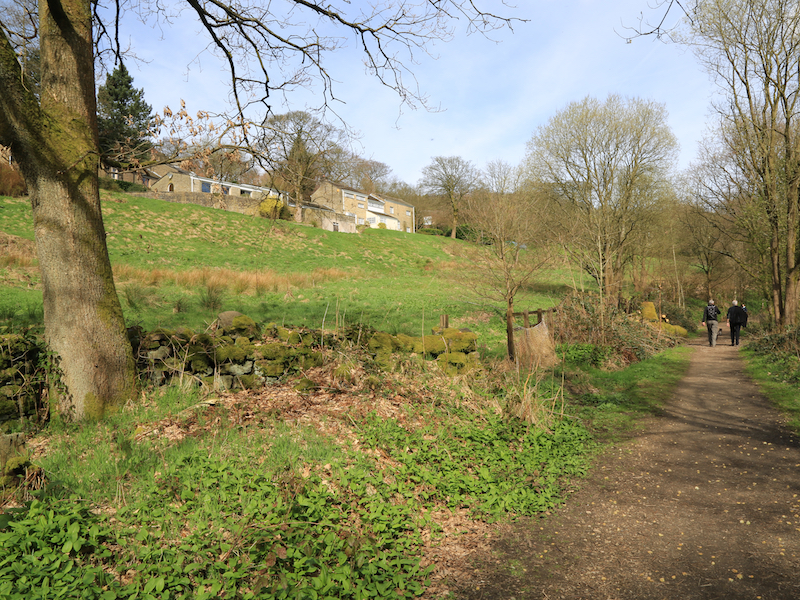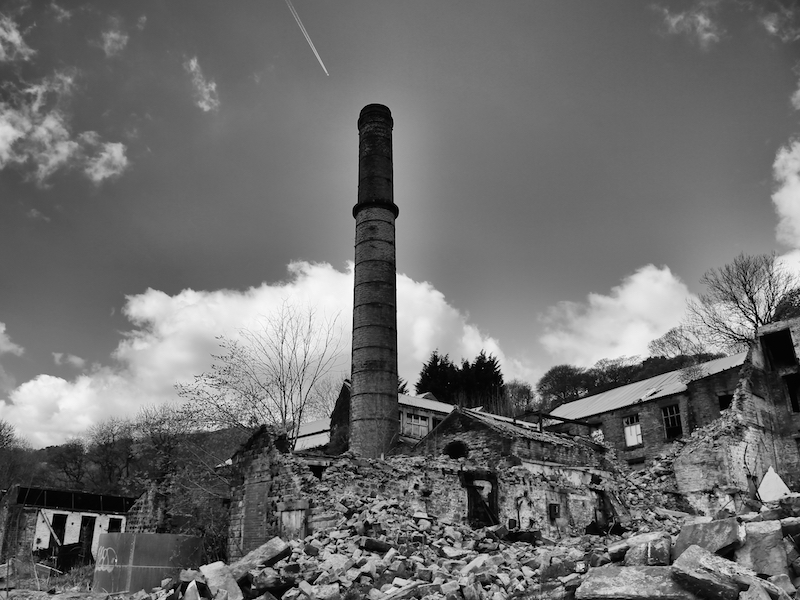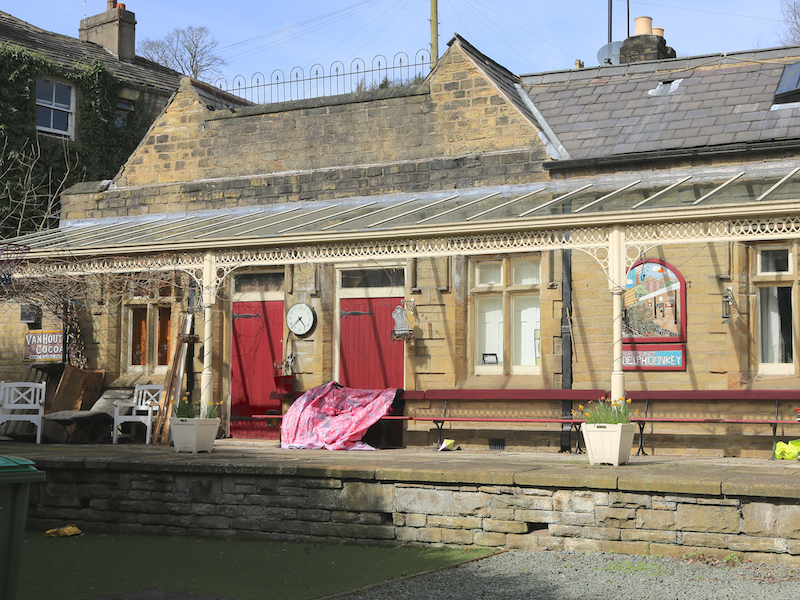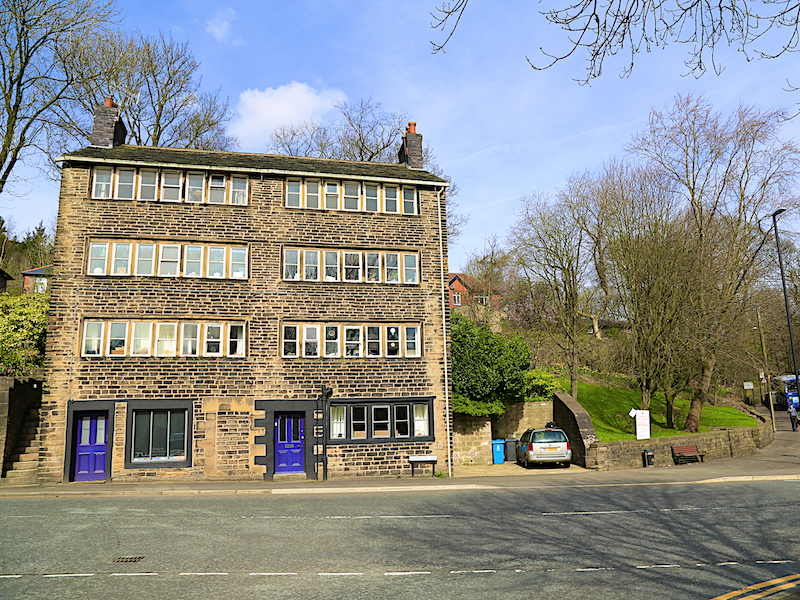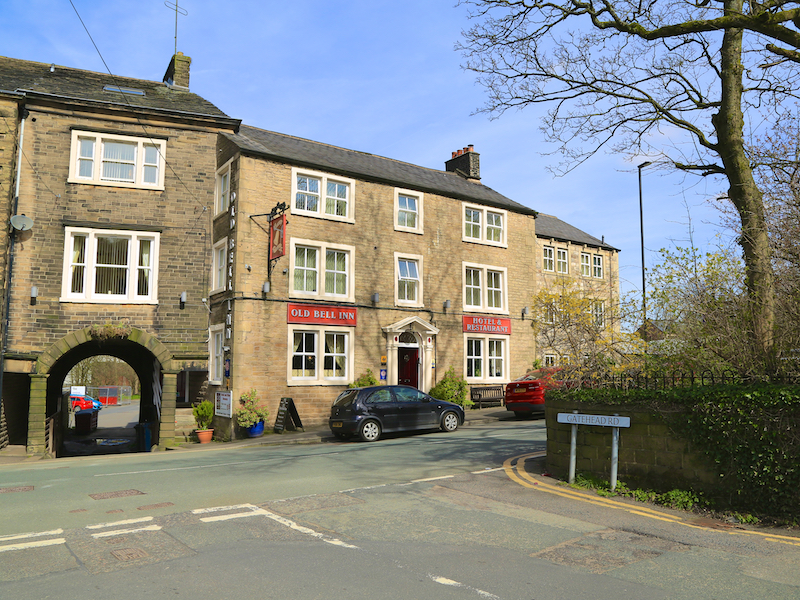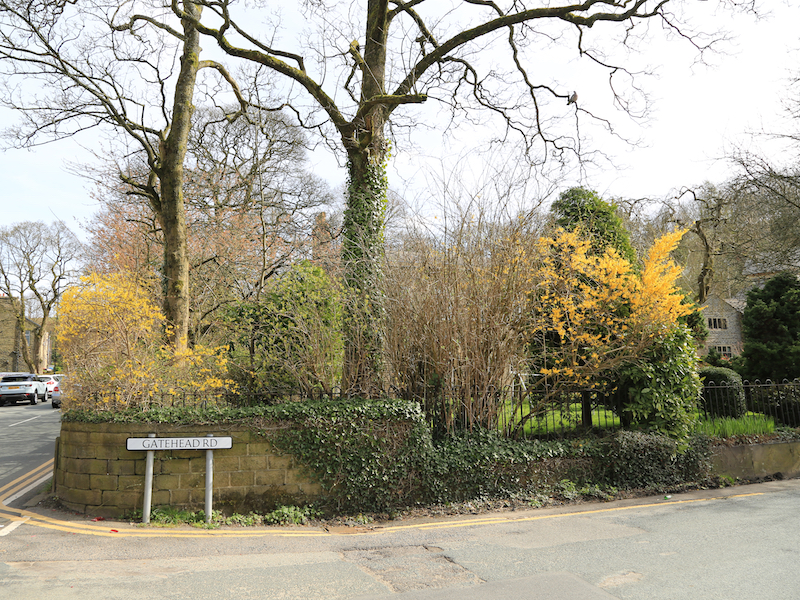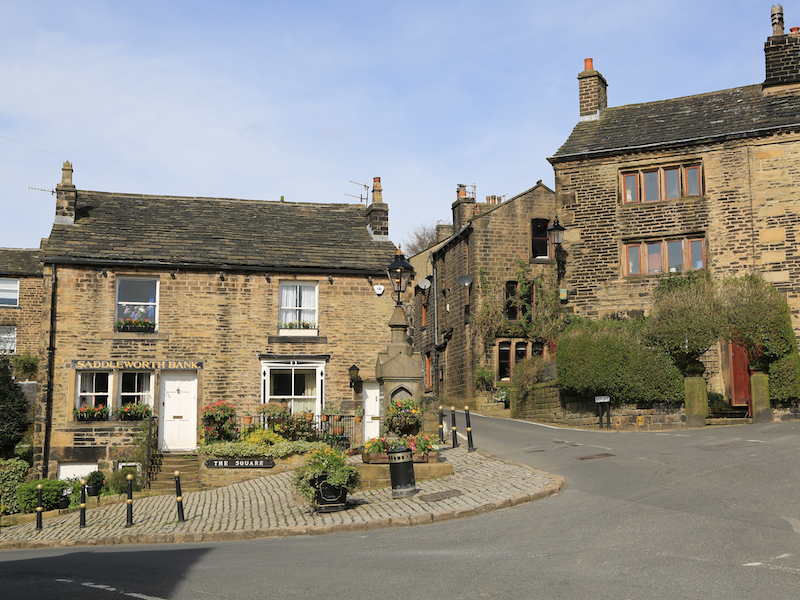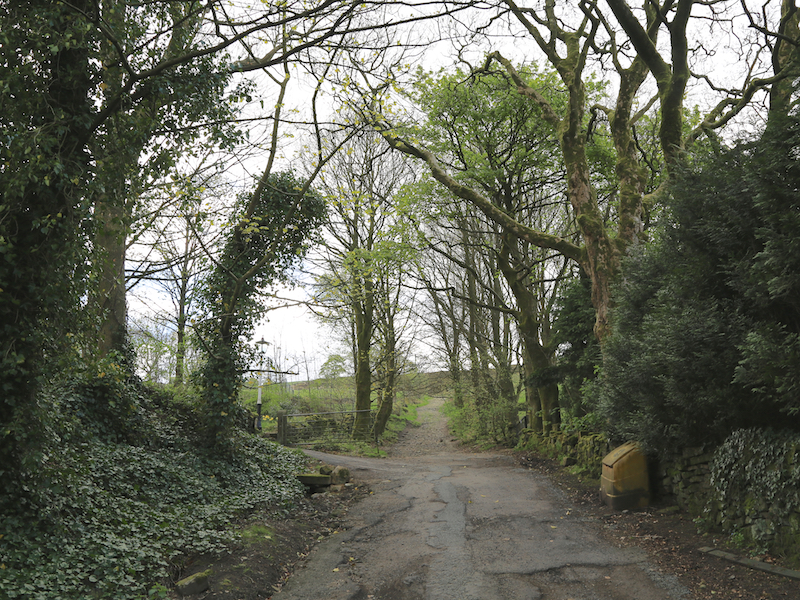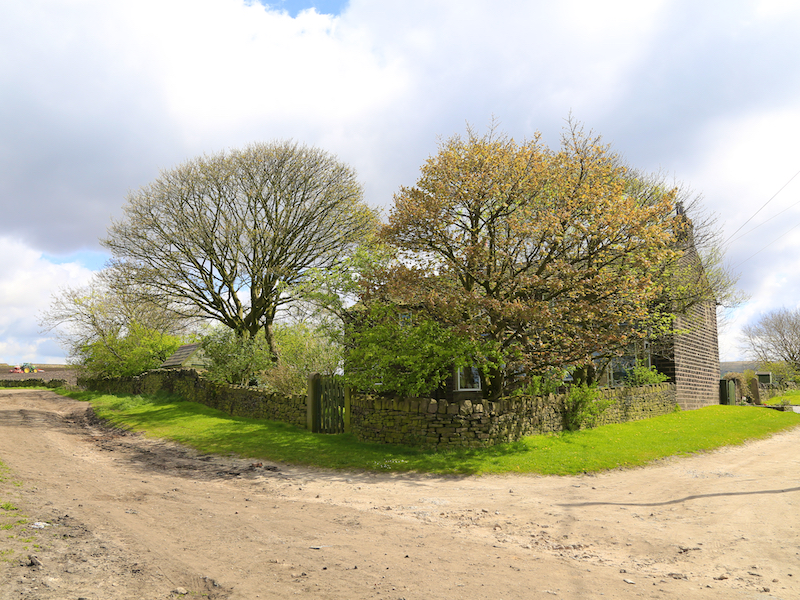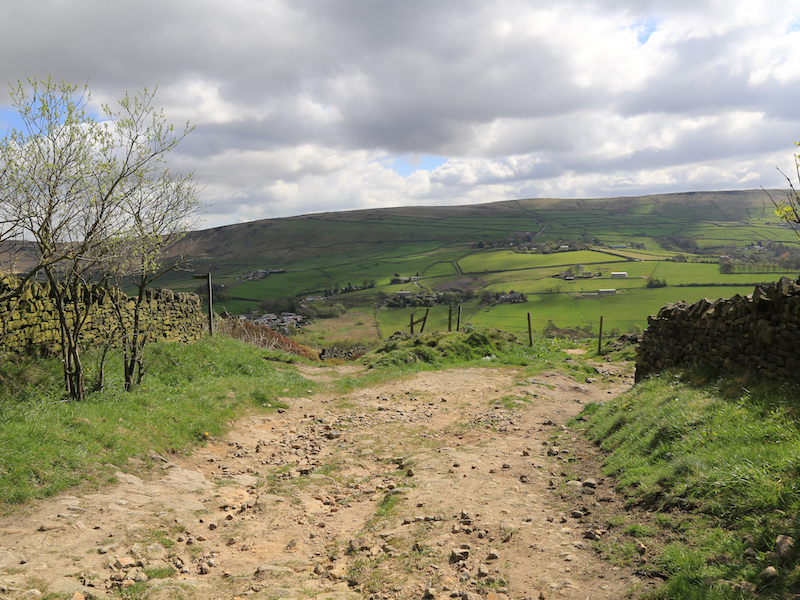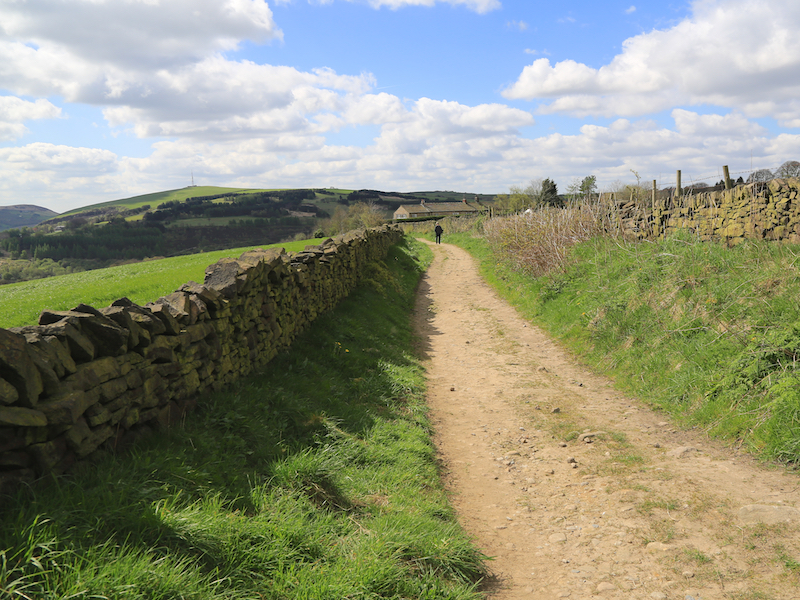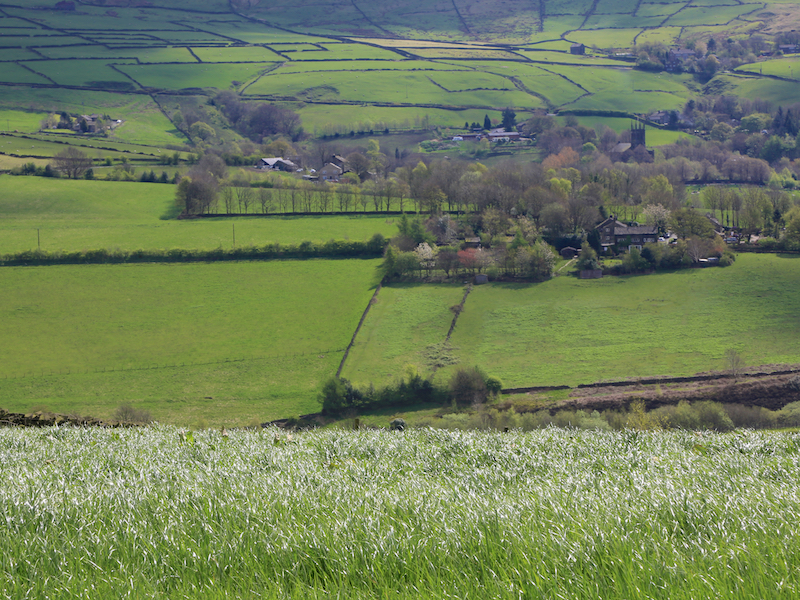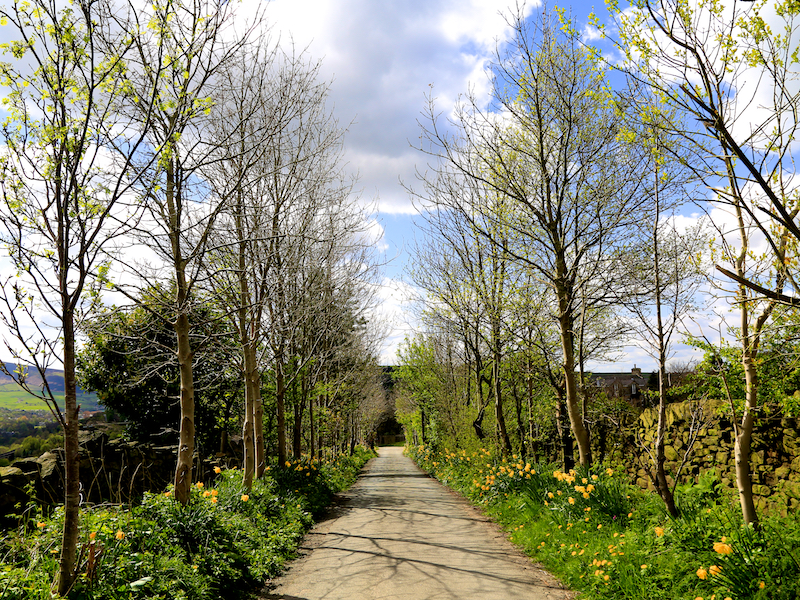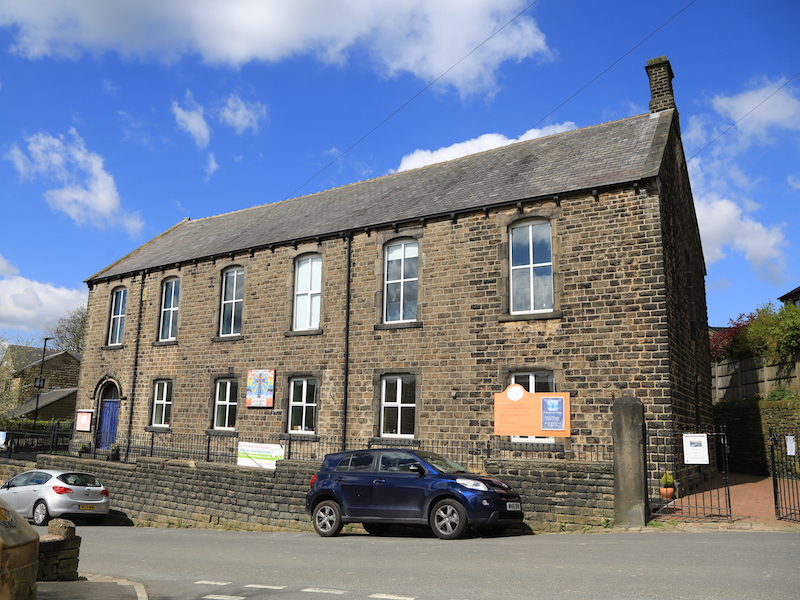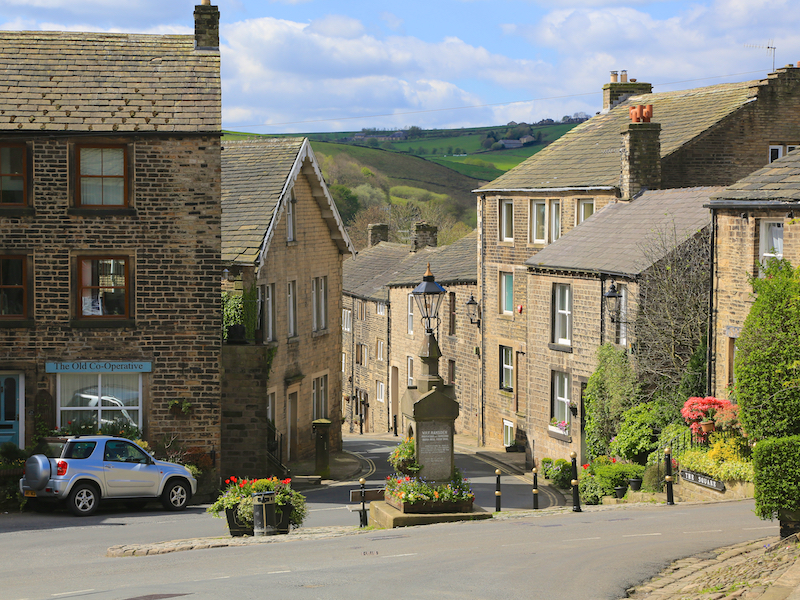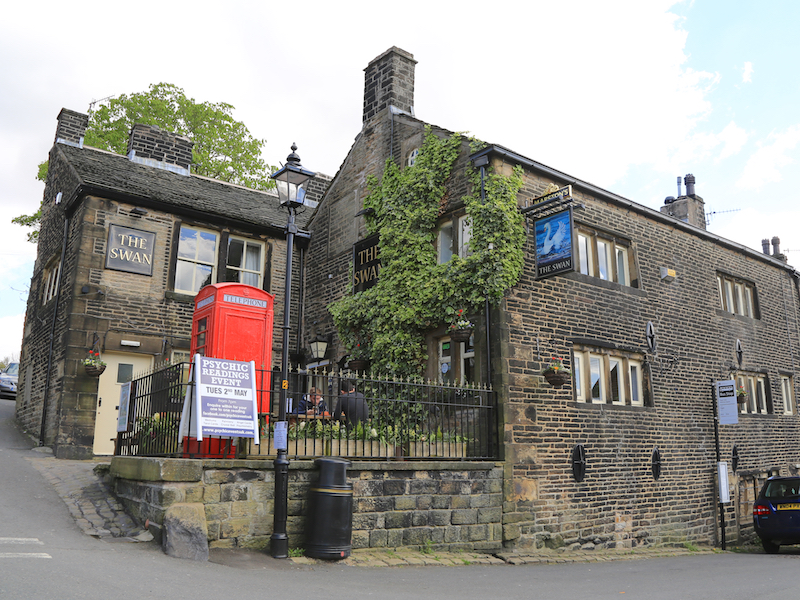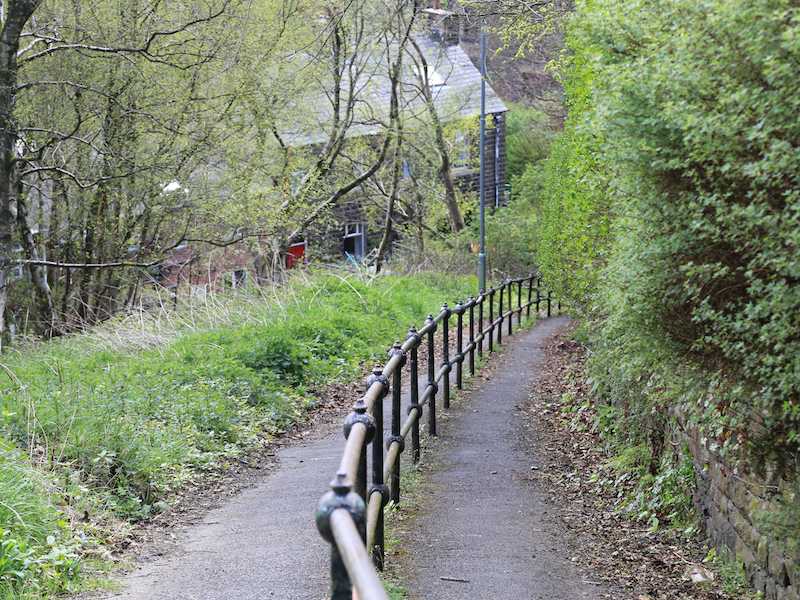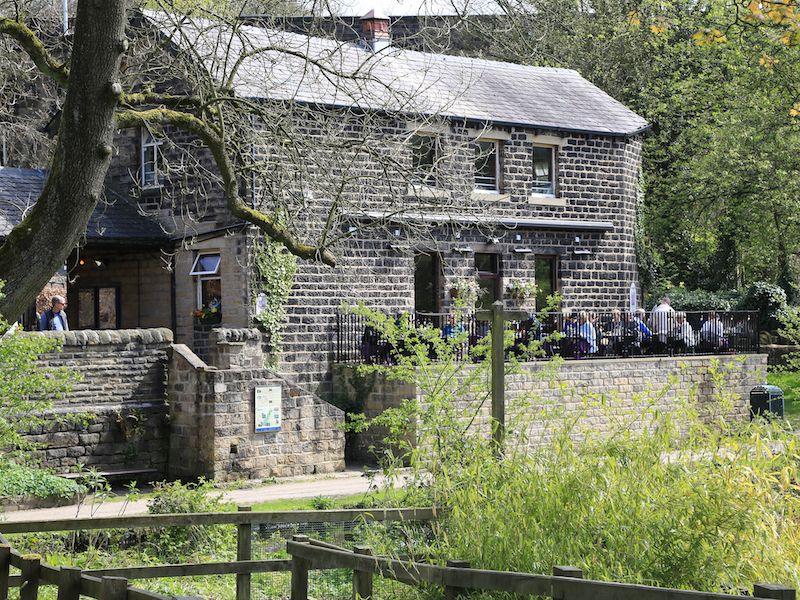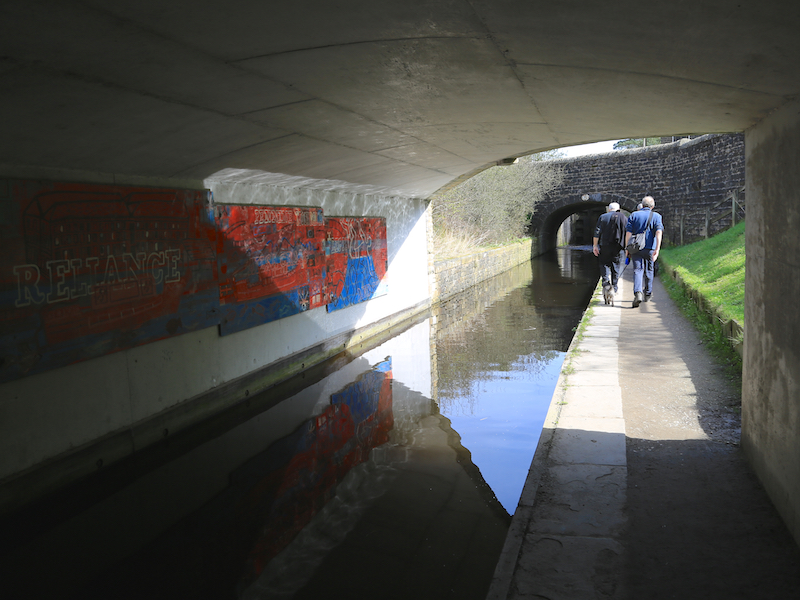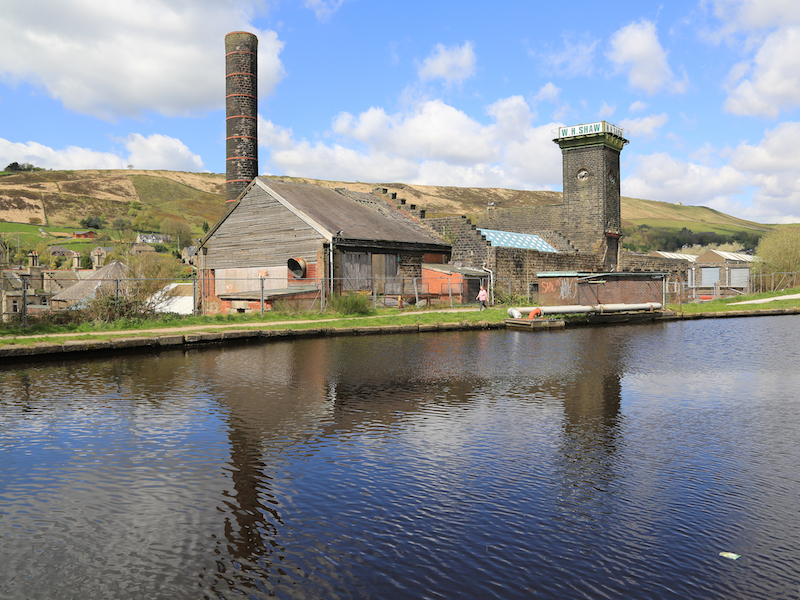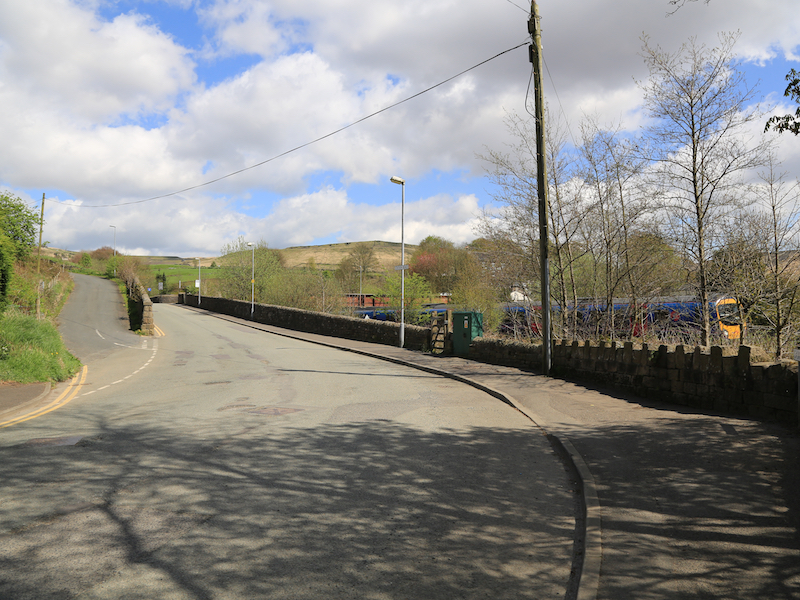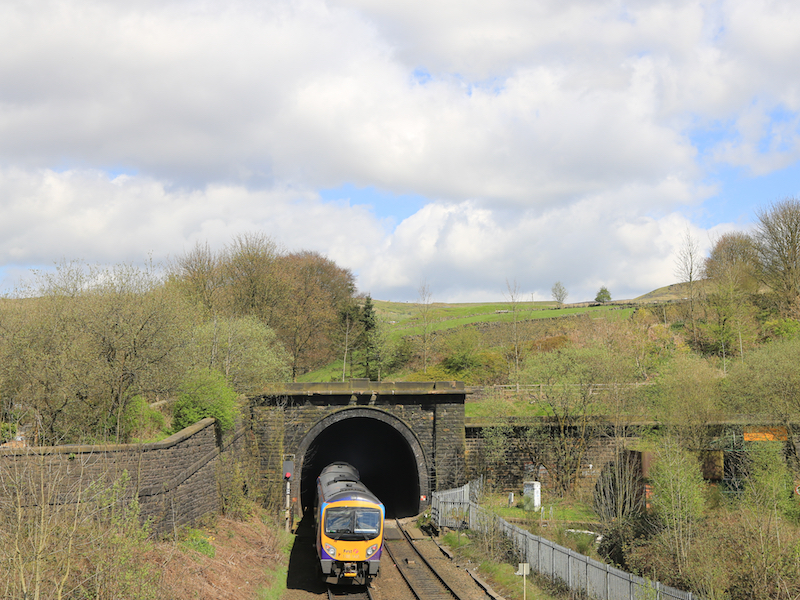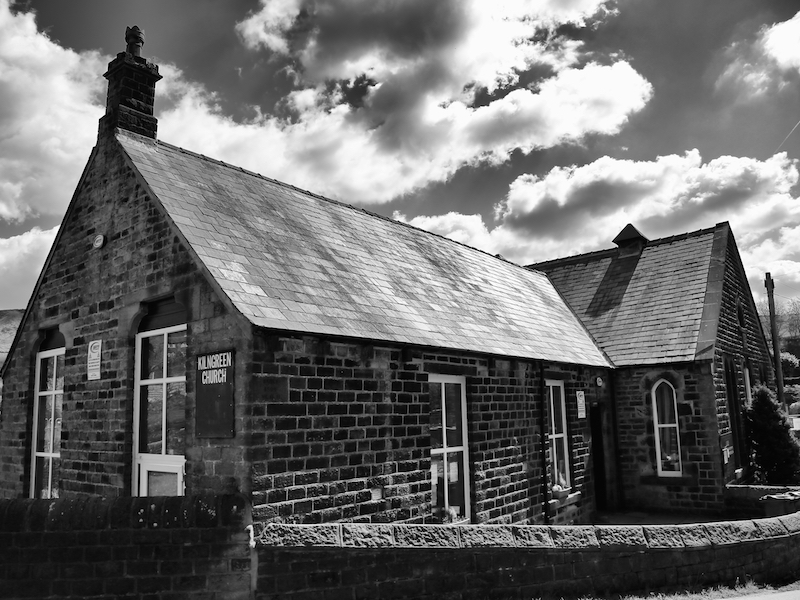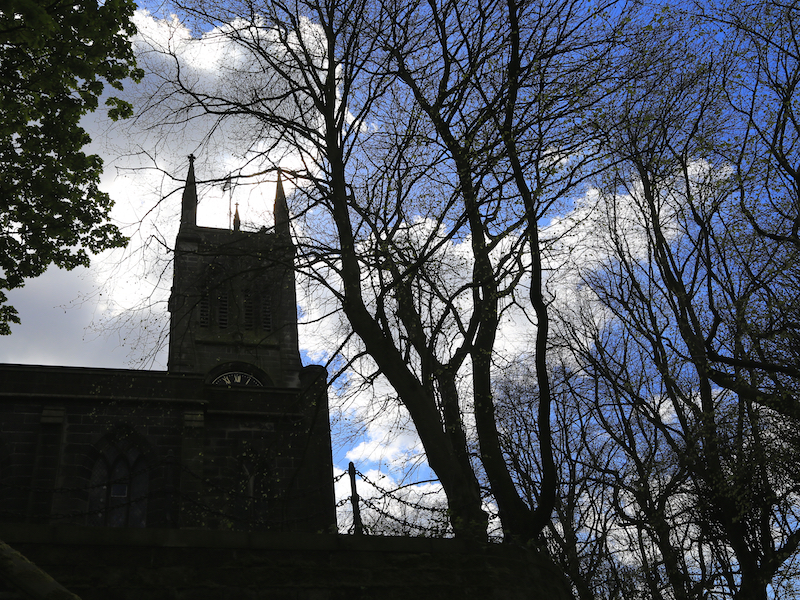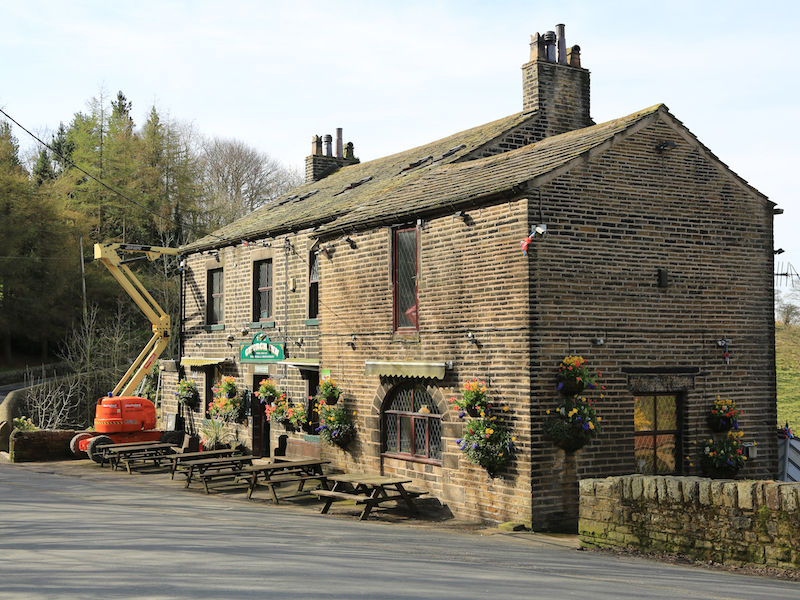Superlative Walks
Urban and rural trails, each with something very specialDobcross, Delph and Diggle
We start and end at St Chad’s Church, which in 2015, alongside Magna Carta, celebrated the 800th anniversary of a church being on this site.
According to local legend, the first church was due to be built on Brown Hill nearby, but every night the stones were mysteriously moved to the present site by mischievous fairies. Eventually, the builders gave up returning the stones and built the church where it now stands. A clearer case of poor project management would be hard to find, unless the fairies were the project managers. They were banished when the church bells first rang. In their place a Grey Lady now haunts the building.
1. Take the road to the left of the church, and immediately at the end of the building take the footpath to the left, which goes straight down until it joins Ryefields Drive.
2. On reaching High Street/A670, turn right towards the railway viaduct, then left at the Brownhill Countryside Centre/Limekiln Café and down to the canal next to the café.
3. Turn left onto the canal, then right over the bridge after the lock under one of Saddleworth railway viaduct’s 23 arches (1849).
4. Join Mow Halls Lane and continue up this road until a narrow bridge is reached. Turn right immediately after the bridge at a sign saying Delph Donkey Line and turn left onto the broad, well-defined path.
This was the route of the Delph Donkey, a branch line which connected Delph to the Huddersfield to Manchester route, opened in 1849. It is believed that early services along the line were horse-drawn, giving the line its name. Passenger services ended in 1955, although a limited freight service continued. The line finally closed in 1963.
There are signs along the route for Dobcross Halt, opened in 1912 and built of wood, and Measurements Halt, which served a factory producing precision clocks and instruments.
5. At the end of the trail, go past the ruins of a number of mill buildings on the left, then continue straight on to Station Approach.
Where this path joins Delph New Road is the former Delph station, now a private house. In 1960, the Royal Train, carrying the Queen Mother, stopped at Delph station for an overnight stay.
6. At the junction, turn right onto Huddersfield Road.
On the left is the Old Bell Inn, a former coaching house, where the then Princess Victoria stayed for a night in 1835 on her way to the York Festival (presumably with her tent and wellies).
From opposite the Old Bell Inn, there are two options, respectively in paragraph 7 and 8:
7. Turn right up Gatehead Road, then follow this up to the right. This road becomes Platt Lane and eventually brings you to The Square in the centre of Dobcross. This is a much shorter and easier route. Continue at paragraph 9.
8. For a more strenuous route, and more spectacular views, continue up Huddersfield Road to Lark Hill Lane. After a short distance, this becomes a fairly uneven, unmade, steep road. On reaching a crossroads with Lark Hill Road, with a single house to the left, continue on Lark Hill Lane to a much smaller junction, where a finger post points left along a footpath. Follow the wider road round to the right and continue down this until reaching Long Lane. At the bottom of Long Lane, turn right onto Sandy Lane, past the Sandy Lane Community Church, which brings you to The Square in the centre of Dobcross.
The Ramsden Memorial in the centre of the square is dedicated to W F Ramsden, who was the village doctor from 1964 to 1900.
Industrial tycoon Henry Platt was born in Dobcross in 1770 He built carding machines in the village, and went on to form Platt Brothers, which was the largest textile machinery manufacturing business in the world. John Schlesinger‘s 1979 film Yanks was filmed on location in Dobcross, and an annual Yanks festival, coupled with a brass band contest on Whit Friday, each contribute to the village’s cultural calendar. A short detour down Wood Lane brings us to Holy Trinity Church, whose clock was known as the Dobcross Lie because it was so inaccurate.
Also facing The Square is the Swan Inn, built in 1765. It was owned in the 1700s by the Wrigley family, some of whom emigrated to America, and a descendant, William Wrigley, began the Wrigley Chewing Gum Company. We have former residents of Dobcross to thank for the spotted pavements we all enjoy. Part of the building was later used as police courts and cells. It has been well renovated with flagged floors throughout and three separate rooms, each with an open fire. In addition to the ground floor rooms, the historic function room upstairs is an award-winning little theatre and performance space. “The function room upstairs plays host to an astonishing array of frolics and fun and serious stuff.” The Daily Telegraph (Guide to the Best British pubs)
9. With your back to The Swan, leave The Square to the left by the footpath Nicker Brow, descend to Delph New Road and rejoin the canal at the Limekiln Cafe, visited earlier (step 2.). Join the towpath of the Huddersfield Narrow Canal canal and walk northward, away from the railway viaduct.
Just after bridge 71 is a transhipment warehouse used to transfer goods from the mills.
Continuing north along the canal towpath. we pass W H Shaw’s Mill, originally the Dobcross Loom Works, known as ‘The Cathedral’. Further on is Warth Mill, built in 1780 as a fulling mill.
Eventually we reach the entrance to the Standedge canal tunnel. Opened in 1811, it is the longest, highest and deepest canal tunnel in Britain (three superlatives in one from Thomas Telford’s tunnel that took 16 years to complete at a cost of £123,804). As it was built without a towpath, horse-drawn boats had to be ‘legged’ through, with the horse walked over the hill to be reunited with the boats at Marsden. Parts of the tunnel are brick-lined, others are bare stone.
The last commercial boat passed through in 1921, and commercial navigation was ended by Act of Parliament (promptly, in 1944). Restoration began in 1981, and it was re-opened in 2001 – four years longer to restore than it took to build.
10. Leave the towpath at the canal tunnel entrance, to the left through a car park, and turn right towards a bridge over the railway.
To the left are the entrances to the Standedge railway tunnels. The first was built in 1848, followed by a second in 1871. In 1894, a third, twin-tracked tunnel was opened and remains in use today. At 3 miles 60 yards it is the fifth longest rail tunnel in Britain. Trains run through here between Manchester and Huddersfield.
11. Turn right after the bridge, opposite the Diggle Hotel, down Lee Side, and past the Kilngreen church. Lee Side becomes Ward Lane, then High Stile Lane and finally Church Lane, bringing us back to St Chad’s Church.
We return to the Church Inn, which as well as being the base for Saddleworth Morris Men, has an award-winning micro-brewery.
With thanks to Saddleworth – Discovery Walks by Christian Naylor

